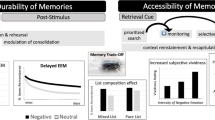Abstract
The relationship between blood pressure (BP) and self-reported mood states was examined for 49 subjects in their natural environment. Subjects performed their usual activities during a 2-day period and recorded their BP using a semiautomated BP monitor at predetermined intervals. Adjective checklists describing mood states and perceptions of the environment as stressful were completed concurrent with each BP measurement. A correlational analysis of average BP and average mood state ratings was performed along with a paired t-test analysis of mood states associated with high versus low BP. The results show that holding anger in correlated positively with average SBP and negatively with average HR. Neither anger arousal nor the expression of anger arousal was able to distinguish between high and low BP readings. The Type A adjective cluster discriminated between high and low SBP as well as between high and low HR readings. The cluster of negative moods also discriminated between high and low SBP. Perceptions of the environment as hostile and demanding discriminated high versus low SBP and high versus low DBP. The discussion focuses upon the value of repeated-measures designs in examining mood/BP relationships as individuals ambulate in their natural environment.
Similar content being viewed by others
References
Ax, A. F. (1953). The physiological differentiation between fear and anger in humans.Psychosom. Med. 15: 433–442.
Baumann, L. J., and Leventhal, H. (1985). I can tell when my blood pressure is up, can't I?Health Psychol. 4: 203–218.
Buss, A. H. (1961).The Psychology of Aggression, John Wiley and Sons, New York.
Goldberg, E. L., Comstock, G. W., and Graves, C. G. (1980). Psychosocial factors and blood pressure.Psychol. Med. 10: 243–255.
Harburg, E., Erfurt, J. C., Haunstein, L. S., Chape, C., Schull, W. J., and Schork, M. A. (1973). Socio-ecological stress, suppressed hostility, skin color, and black-white male blood pressure: Detroit.Psychosom. Med. 35: 276–296.
Harshfield, G. A., Pickering, T. G., Kleinert, H. D., Blank, S., and Laragh, J. H. (1982). Situational variations of blood pressure in ambulatory hypertensive patients.Psychosom. Med. 44: 237–245.
Herman, S., Blumenthal, J. A., Black, G., and Chesney, M. (1981). Self-ratings of Type A (coronary prone) adults: Do Type As know they are As?Psychosom. Med. 43: 405–413.
Horan, M. J., Kennedy, H. L., and Padgett, N. E. (1981). Do borderline hypertensive patients have labile blood pressure?Ann. Intern. Med. 94: 466–468.
Krantz, D. S., and Manuck, S. B. (1984). Acute psychophysiologic reactivity and risk of cardiovascular disease: A review and methodologic critique.Psychol. Bull. 96: 435–464.
Lazarus, R. S., and Folkman, S. (1982). Coping and adaptation. In Genry, W. D. (ed.),The Handbook of Behavioral Medicine, Guilford Press, New York, pp. 282–325.
Linden, W. (1984).Psychological Perspectives of Essential Hypertension: Etiology, Maintenance, and Treatment, Karger Biobehavioral Medicine Series 3, Karger, Basel.
Linden, W., and Feuerstein, M. (1983). Essential hypertension and social coping behavior: Experimental findings.J. Hum. Stress 9: 22–31.
Obrist, P. A. (1982). Cardiac-behavioral interactions: A critical appraisal. In Cacioppo, J. T., and Petty, R. E. (eds.),Perspectives in Cardiovascular Psychophysiology, Guilford Press, New York, pp. 265–295.
North American Phillips Corporation (1983).Manual for Norelco Electronic Blood Pressure Meter, Model 3500.
Pennebaker, J., Gonder-Frederick, L., Stewart, H., Elfman, L., and Skelton, J. (1982). Physical symptoms associated with blood pressure.Psychophysiology 2: 201–210.
Powell, L. H., and Thoresen, C. E. (1987). Modifying the Type A behavior pattern: A small group treatment approach. In Blumenthal, J. A., and McKee, D. C. (eds.),Applications in Behavioral Medicine and Health Psychology: A Clinician's Source Book, Professional Resource Exchange, Sarasota, Fla., pp. 171–207.
SAS Institute Inc. (1982).SAS User's Guide: Basics, SAS Institute Inc., Cary, N.C.
Schachter, J. (1957). Pain, fear, and anger in hypertensives and normotensives: A psychophysiological study.Psychosom. Med. 29: 17–29.
Shacham, S., Reinhardt, L. C., Raubertas, R. F., and Cleeland, C. S. (1983). Emotional states and pain: Intraindividual and interindividual measures of association.J. Behav. Med. 6: 405–419.
Shapiro, D., and Goldstein, I. B. (1982). Biobehavioral perspectives on hypertension.J. Consult. Clin. Psychol. 50: 841–858.
Sokolow, M., Werdegar, D., Perloff, D. B., Cowan, R. M., and Brenenstuhl, H. (1970). Preliminary studies relating portably recorded blood pressures to daily life events in patients with essential hypertension.Biblio. Psychiat. 144: 164–189.
Southard, D. R. (1986). Single Case Correlational Designs: The Assessment of Blood Pressure and Mood Co-variation, Seventh Annual Meeting, Society of Behavioral Medicine, San Francisco, March.
Southard, D. R., Coates, T. J., Kolodner, K., Parker, F. C., Padgett, N. E., and Kennedy, J. L. (1986). Relationship between mood and blood pressure in the natural environment: An adolescent population.Health Psychol. 5: 469–480.
Stainbrook, G. (1988). Stress management and hypertension. In Russell, M. L. (ed.),Stress Management for Chronic Disease, Pergamon Press, New York, pp. 156–174.
Author information
Authors and Affiliations
Additional information
This article is based on the first author's dissertation, which was supervised by the second author and submitted to Virginia Polytechnic Institute and State University in partial fulfillment of the requirements for the doctoral degree.
Rights and permissions
About this article
Cite this article
Southard, D.R., Eisler, R.M. & Skidmore, J.R. Covariation of mood and blood pressure during daily activities. J Behav Med 11, 537–551 (1988). https://doi.org/10.1007/BF00844904
Accepted:
Issue Date:
DOI: https://doi.org/10.1007/BF00844904




